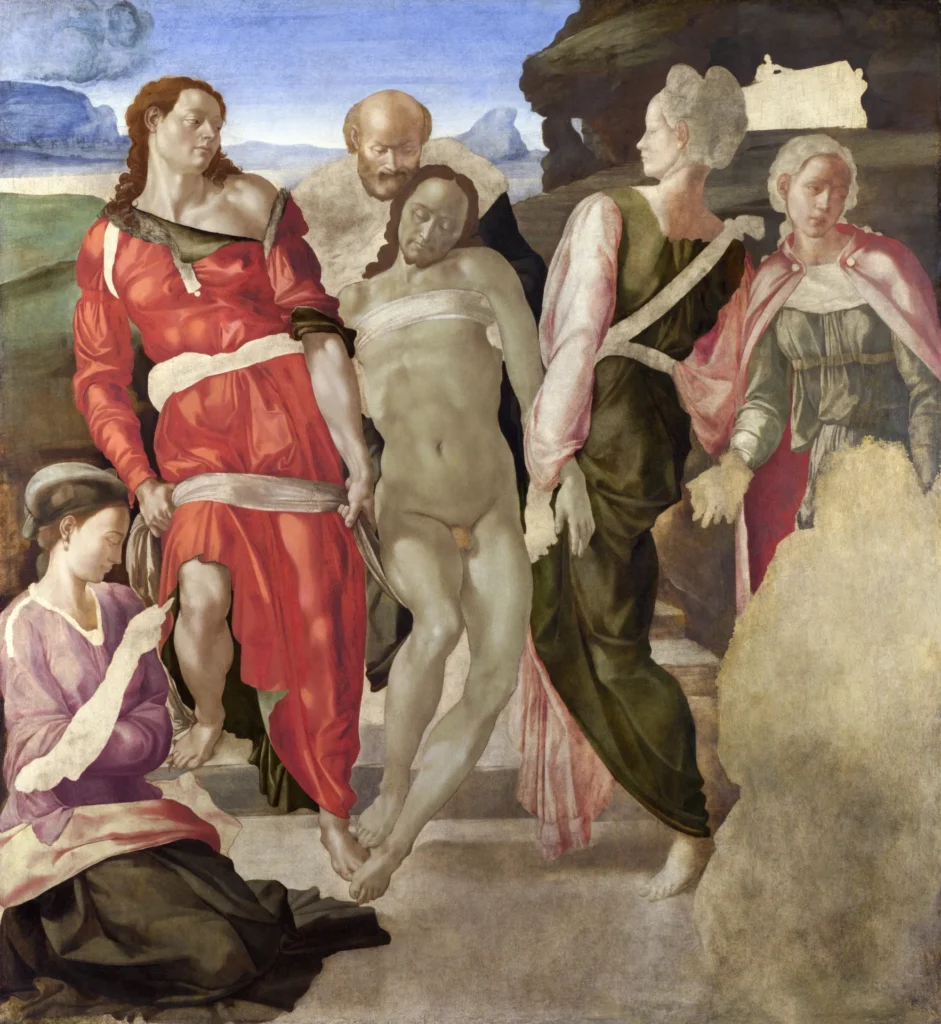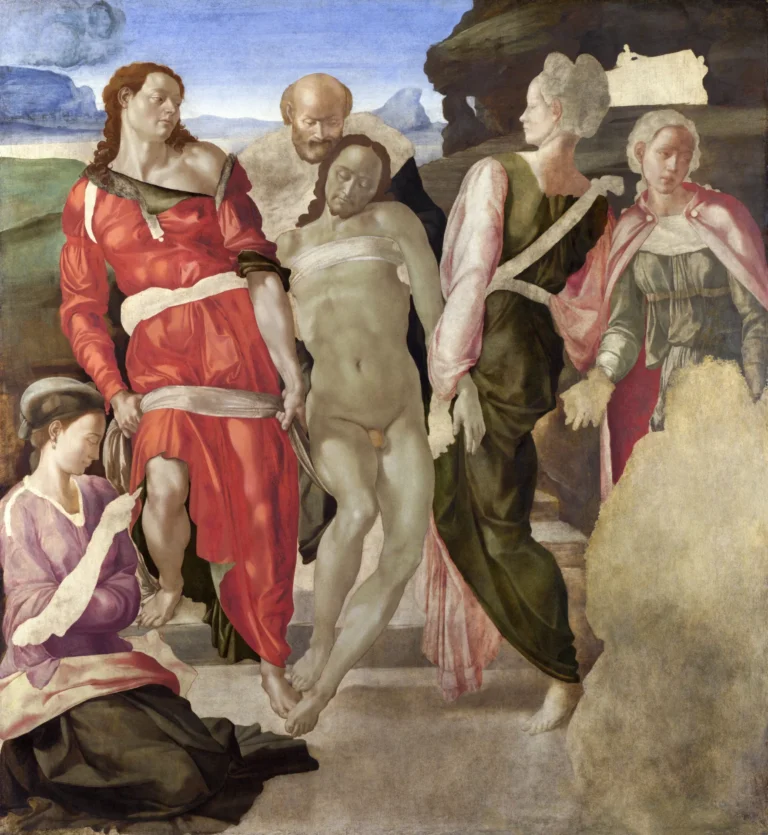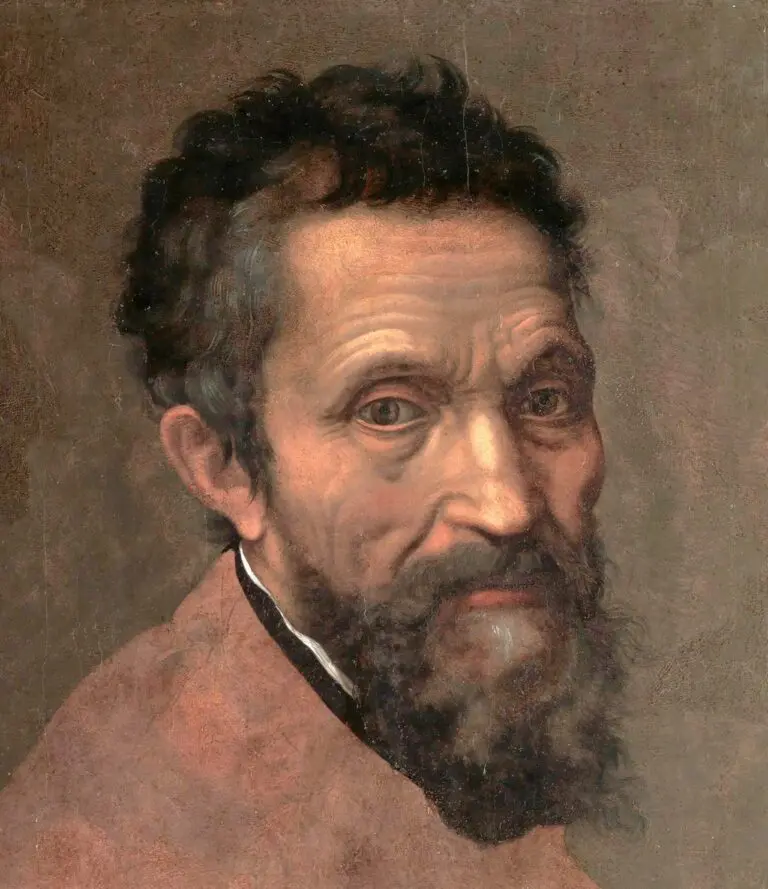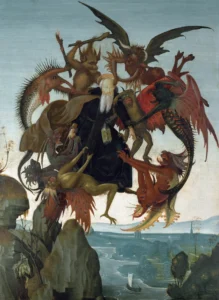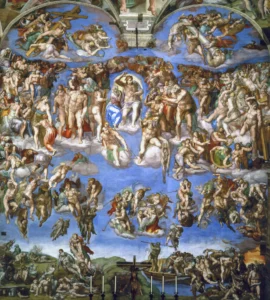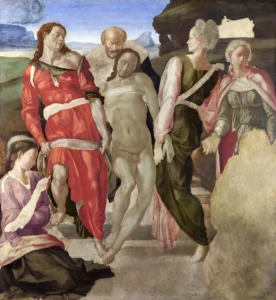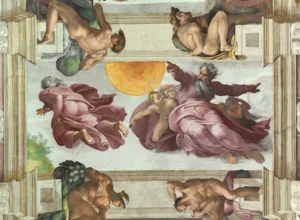The Entombment (1500)
Created during the Italian Renaissance, Michelangelo's The Entombment portrays the poignant moment of Jesus Christ's burial. The piece intrigues viewers with its unfinished state, showcasing Michelangelo's unique technique of layering colors and forms rather than outlining the entire composition first. Housed in the National Gallery in London, this work illuminates the depth of emotion and physicality the artist could convey, making it a key piece in understanding Renaissance art and Michelangelo's vision.
Around 1500-1501
About the Artwork
Did You Know
Liked what you see? Add it to your collection.
Enjoyed reading? Share it.
... continued
The Entombment by Michelangelo Buonarroti
is an unfinished painting created around 1500-1501, during the Italian Renaissance.
Medium and Dimensions
The painting is executed in tempera with oil overpainting on a wooden panel, measuring 161.7 cm × 149.9 cm (63.7 in × 59.0 in).
Location
It is currently housed in the National Gallery in London, where it was acquired in 1868 from Robert Macpherson, a Scottish photographer and art dealer.
Subject and Composition
The painting depicts the burial of Jesus Christ, a scene from the Passion of Christ. The central figure is the naked body of Christ being carried up a flight of steps to the sepulchre by several figures.
Unfinished State
The painting remains unfinished, with several areas left incomplete.
Historical Context
The painting is believed to have been commissioned for the church of Sant'Agostino in Rome but was never delivered.
Interpretation and Style
The composition is novel, with Christ's body held vertically.
Provenance
The painting was rediscovered in the 19th century after being obscured by dirt, smoke, and varnish.




